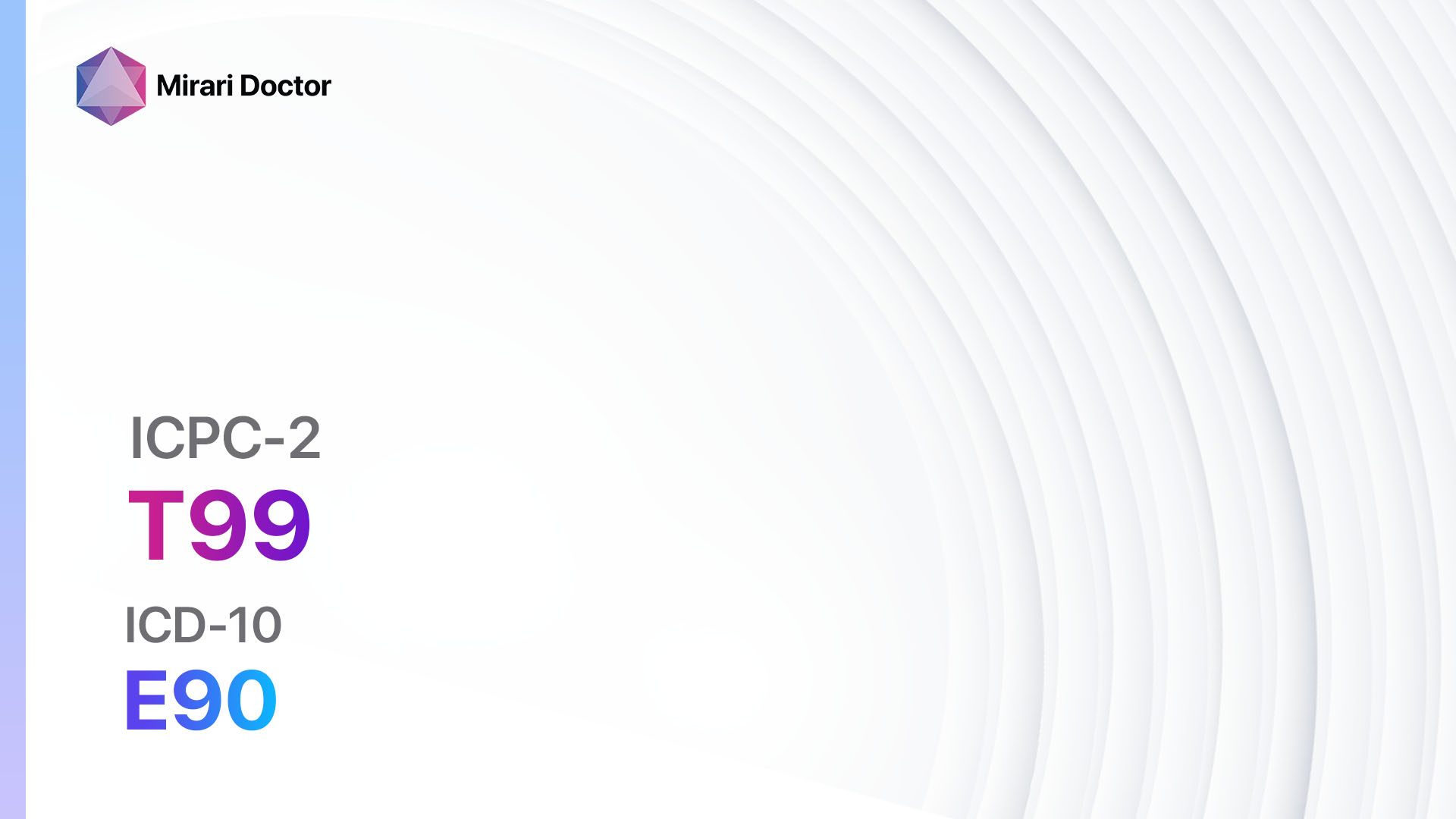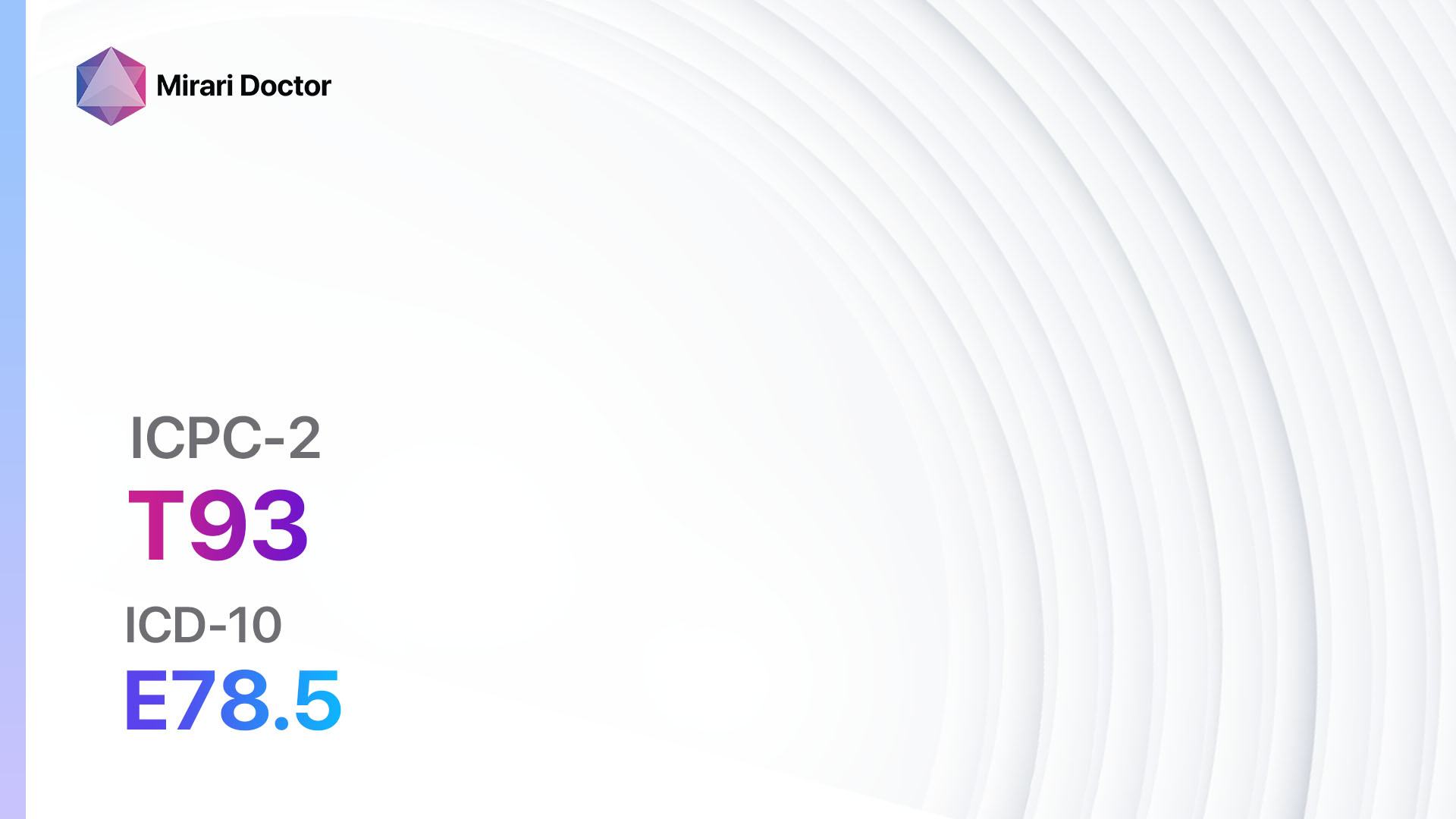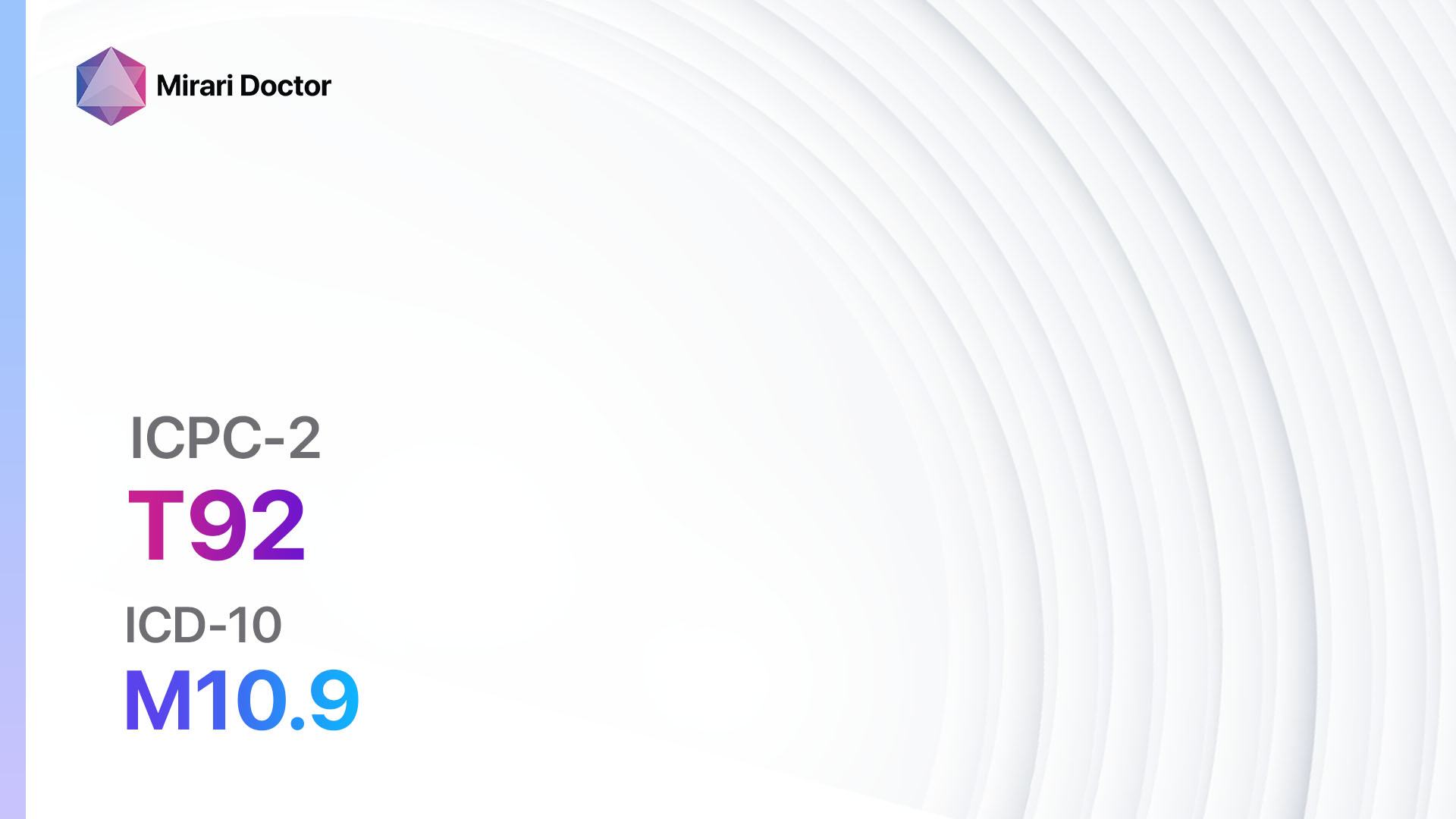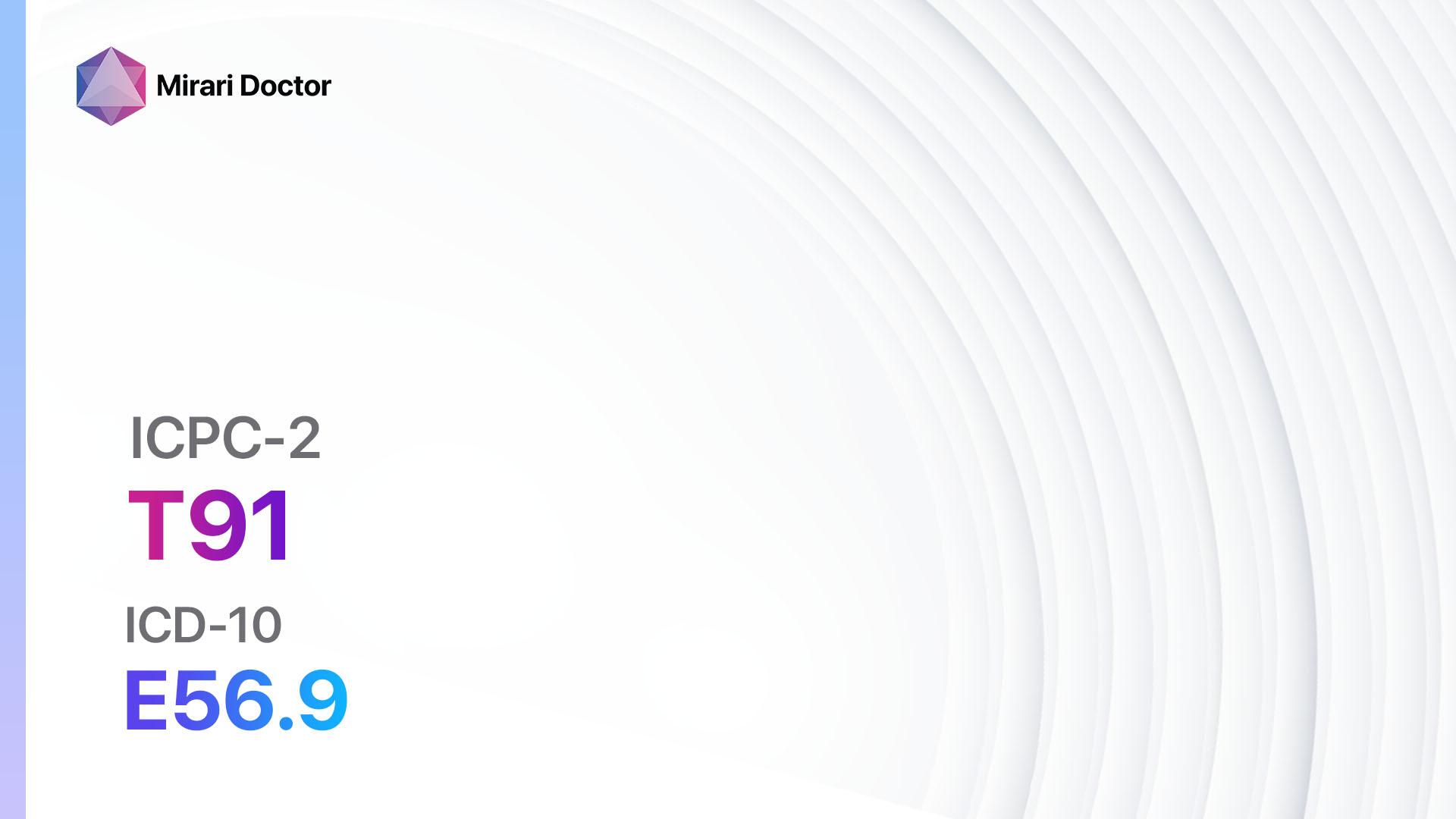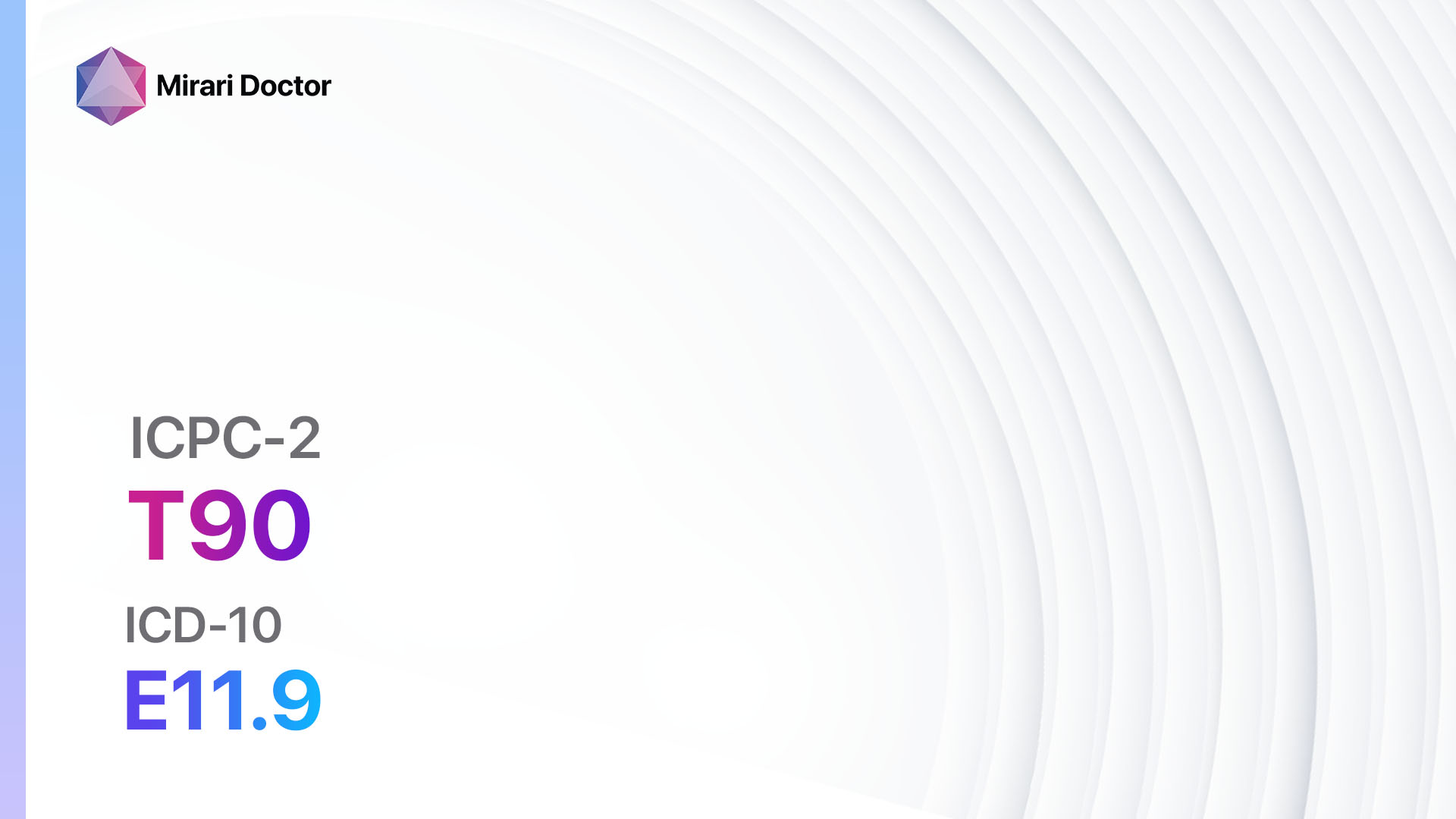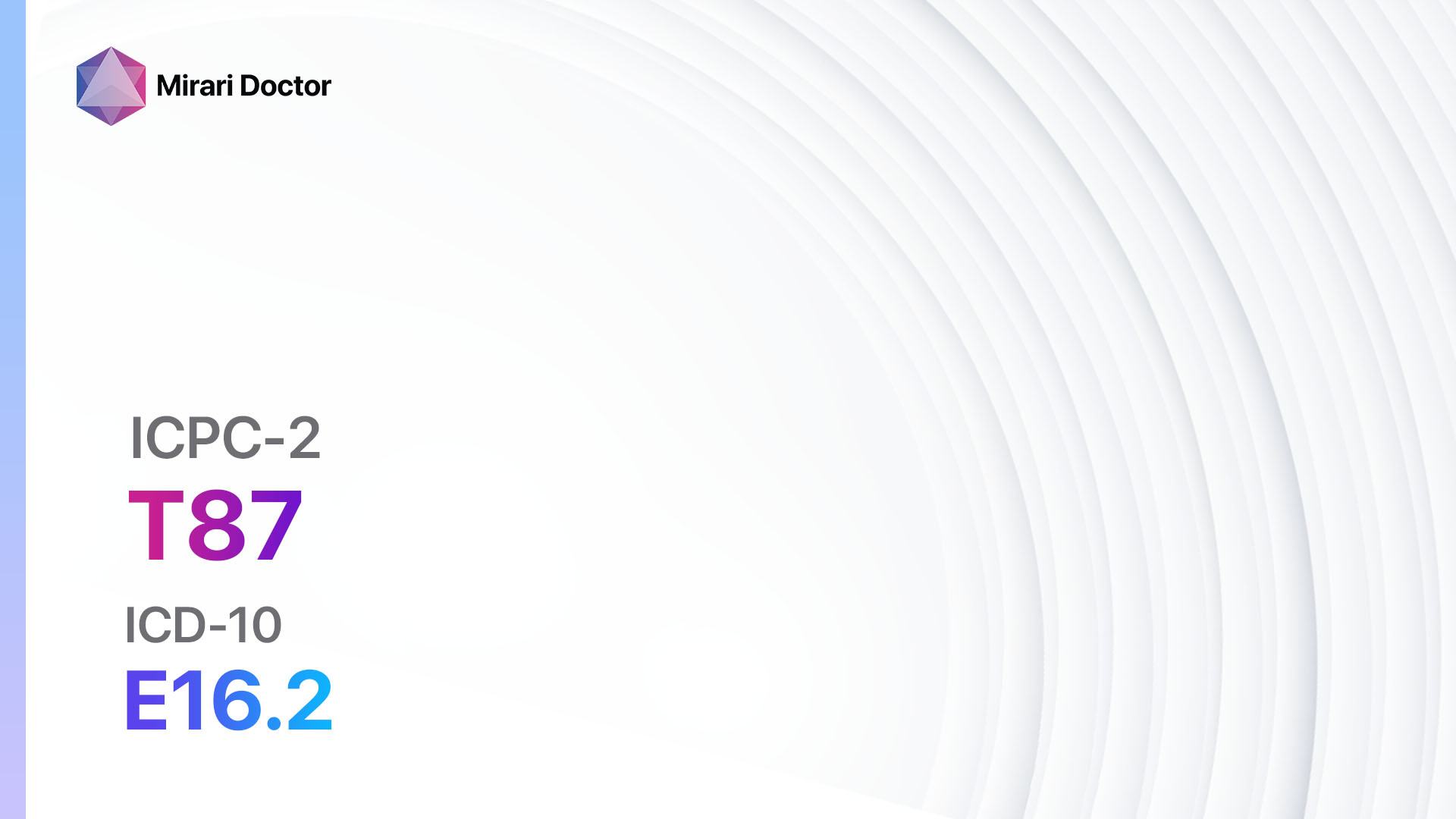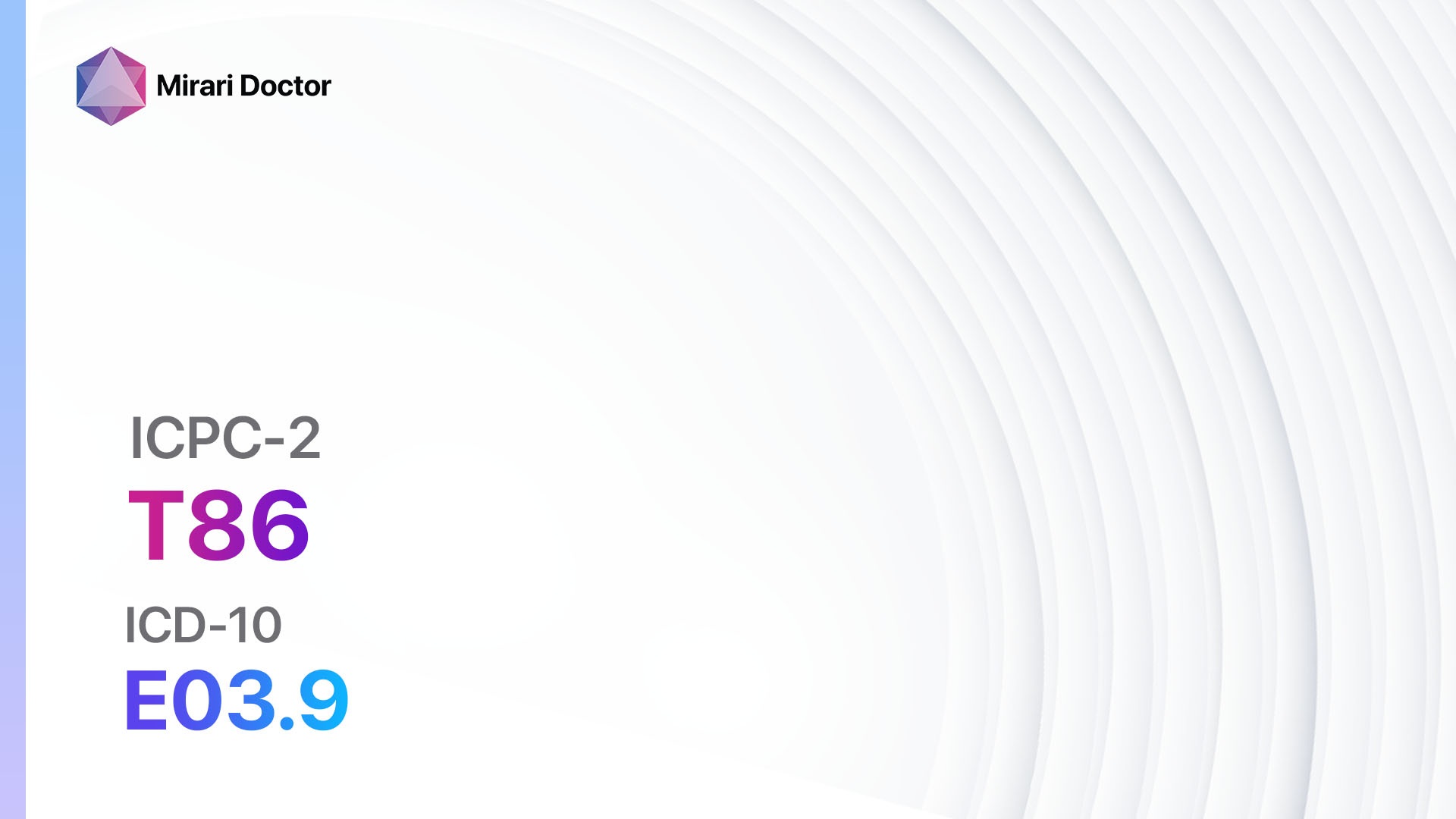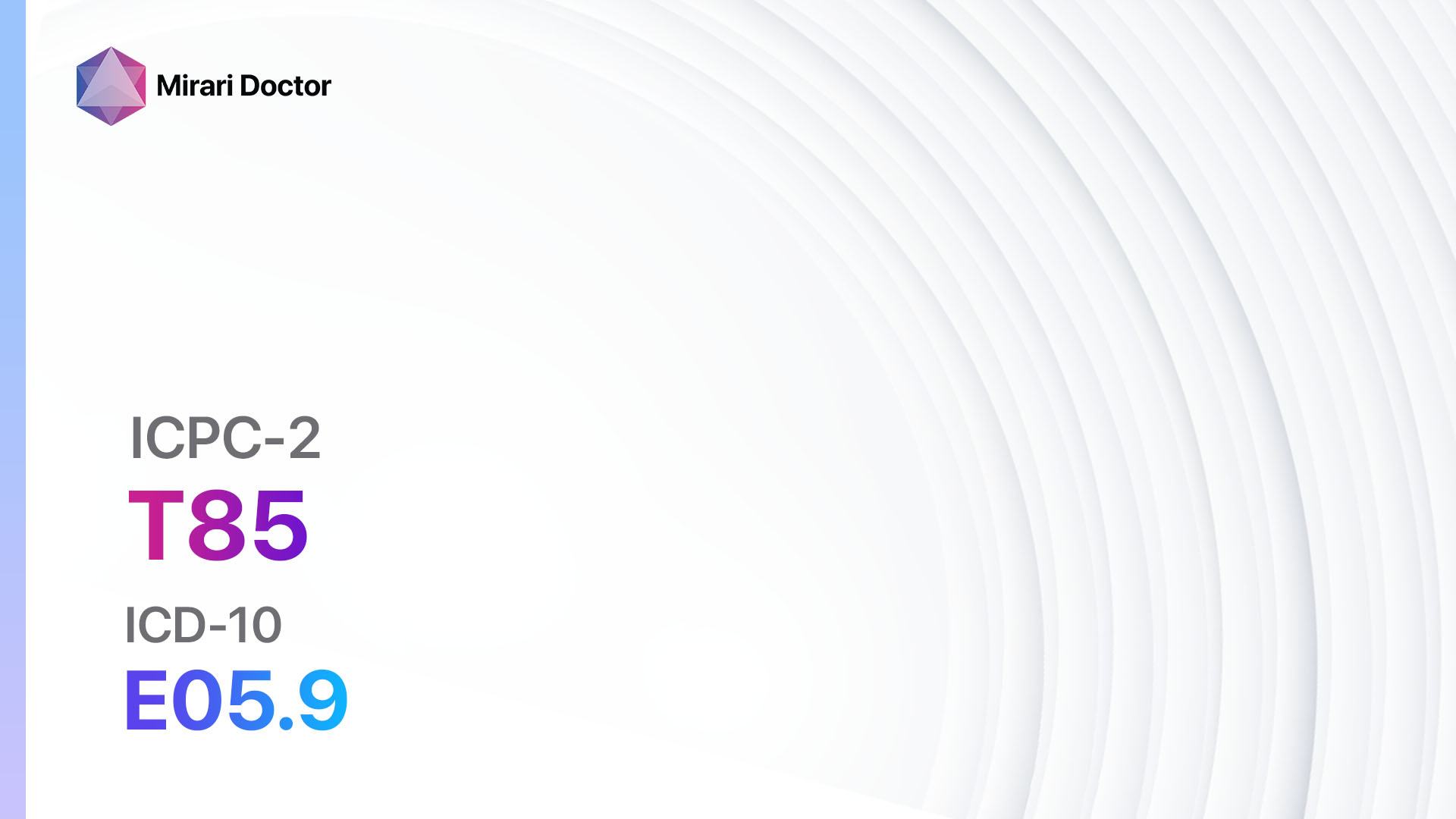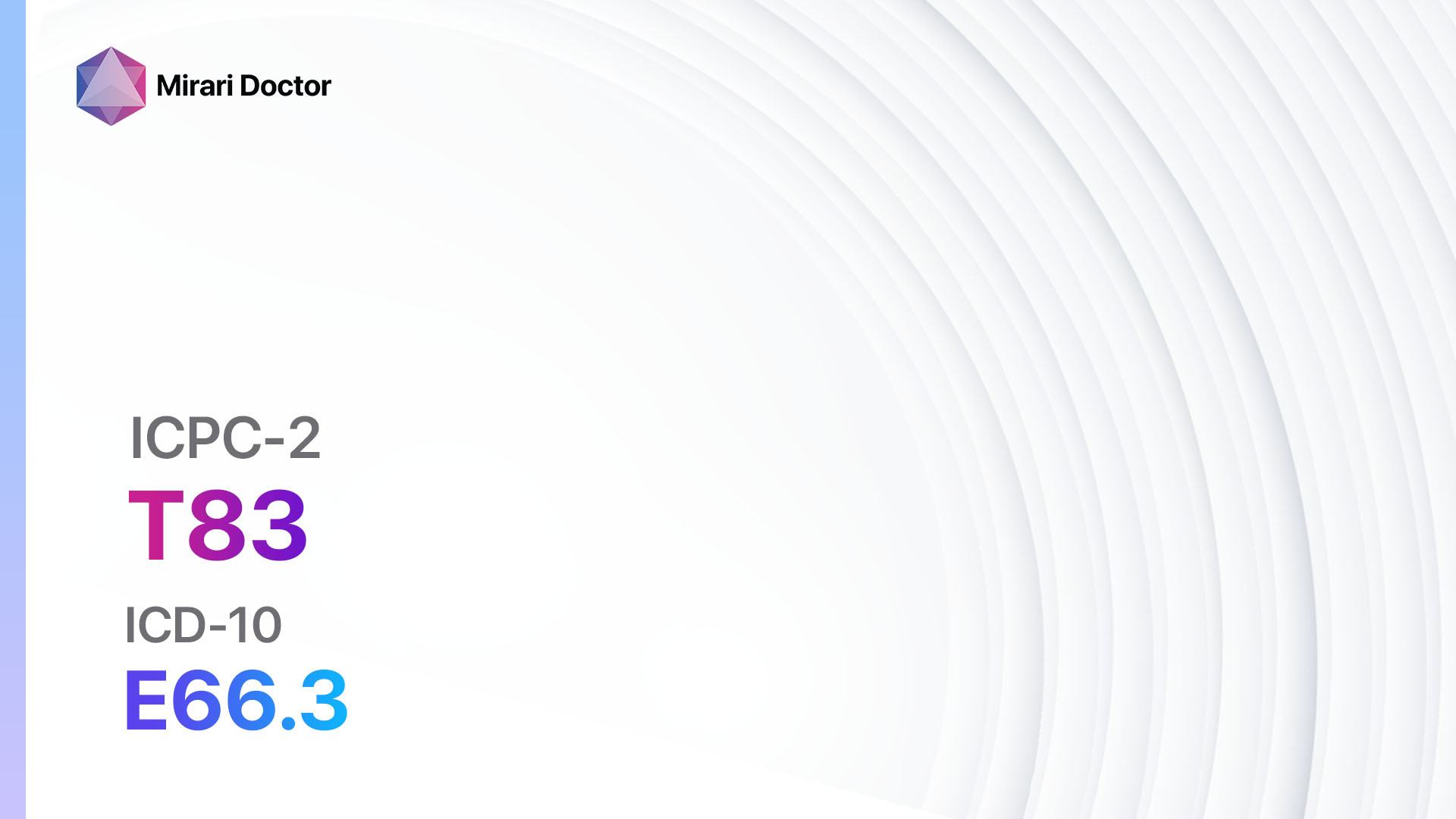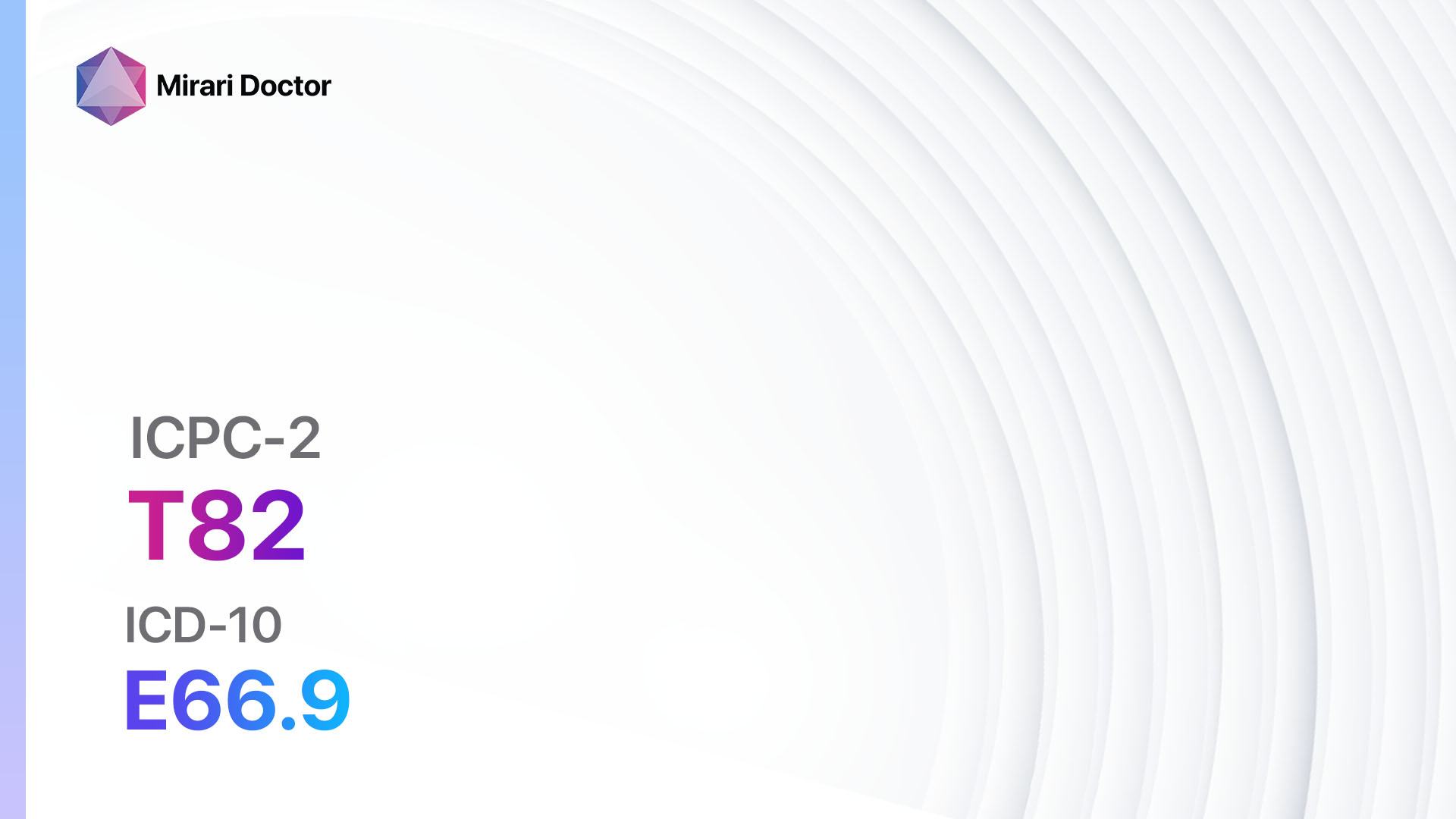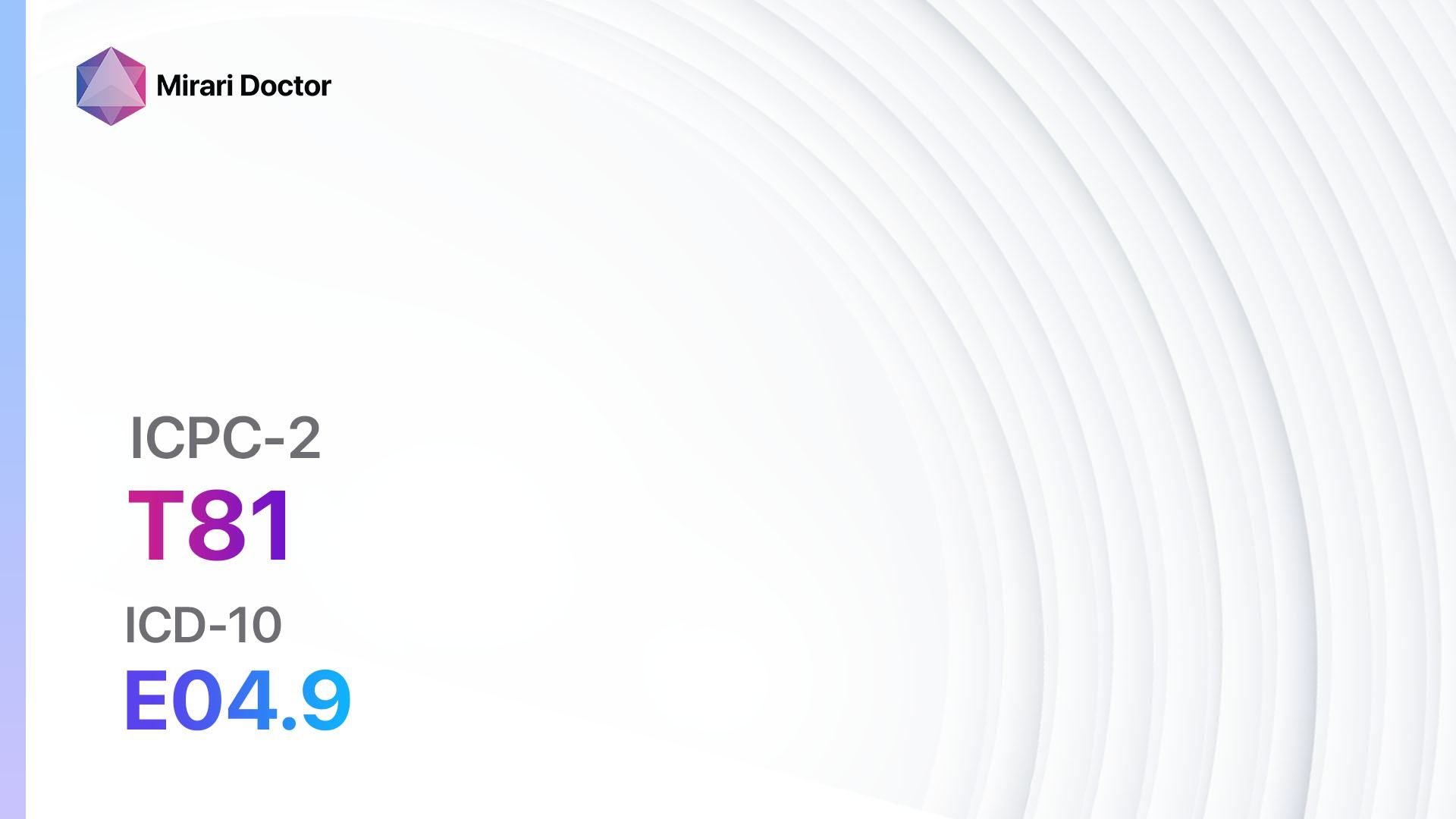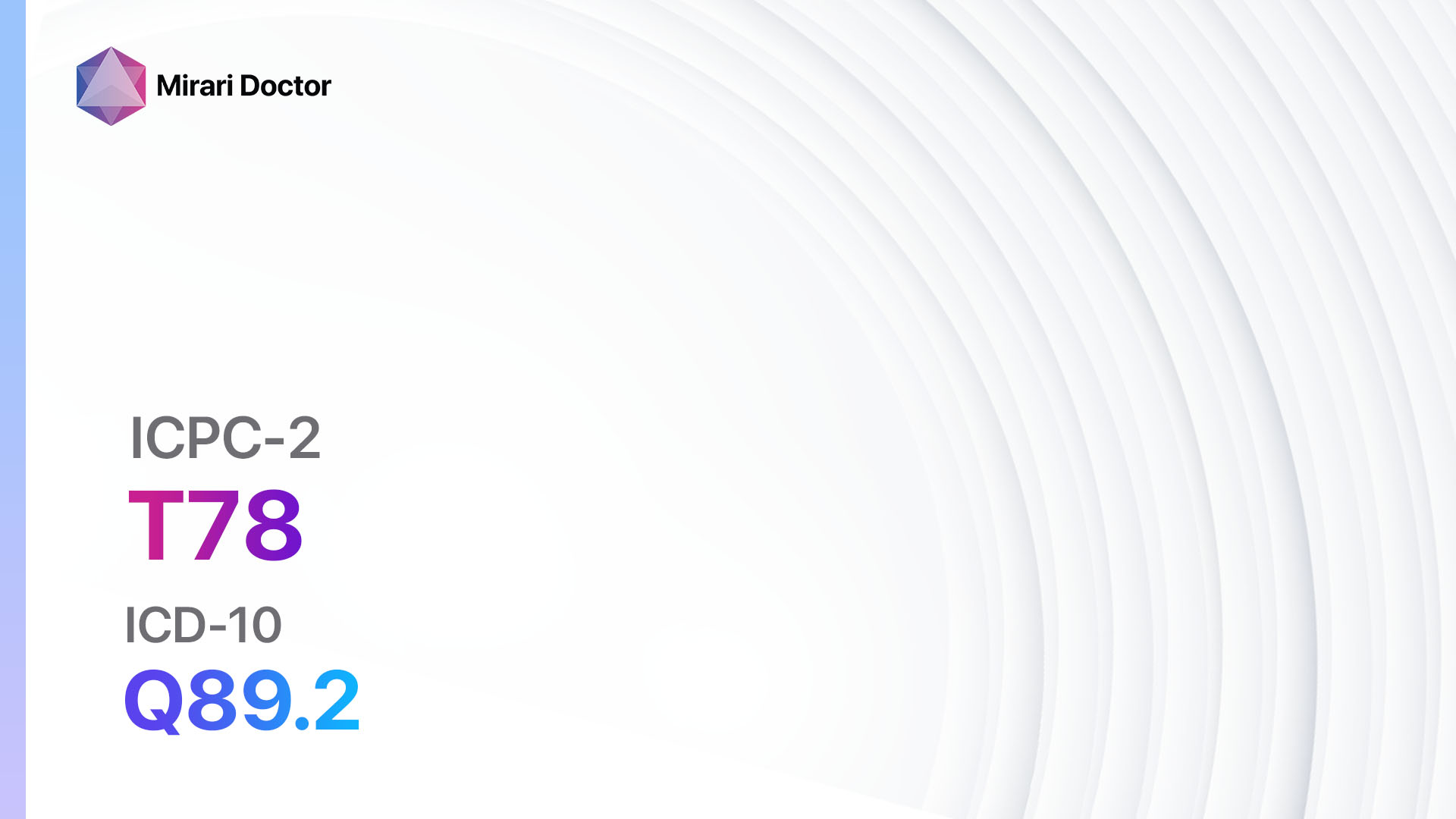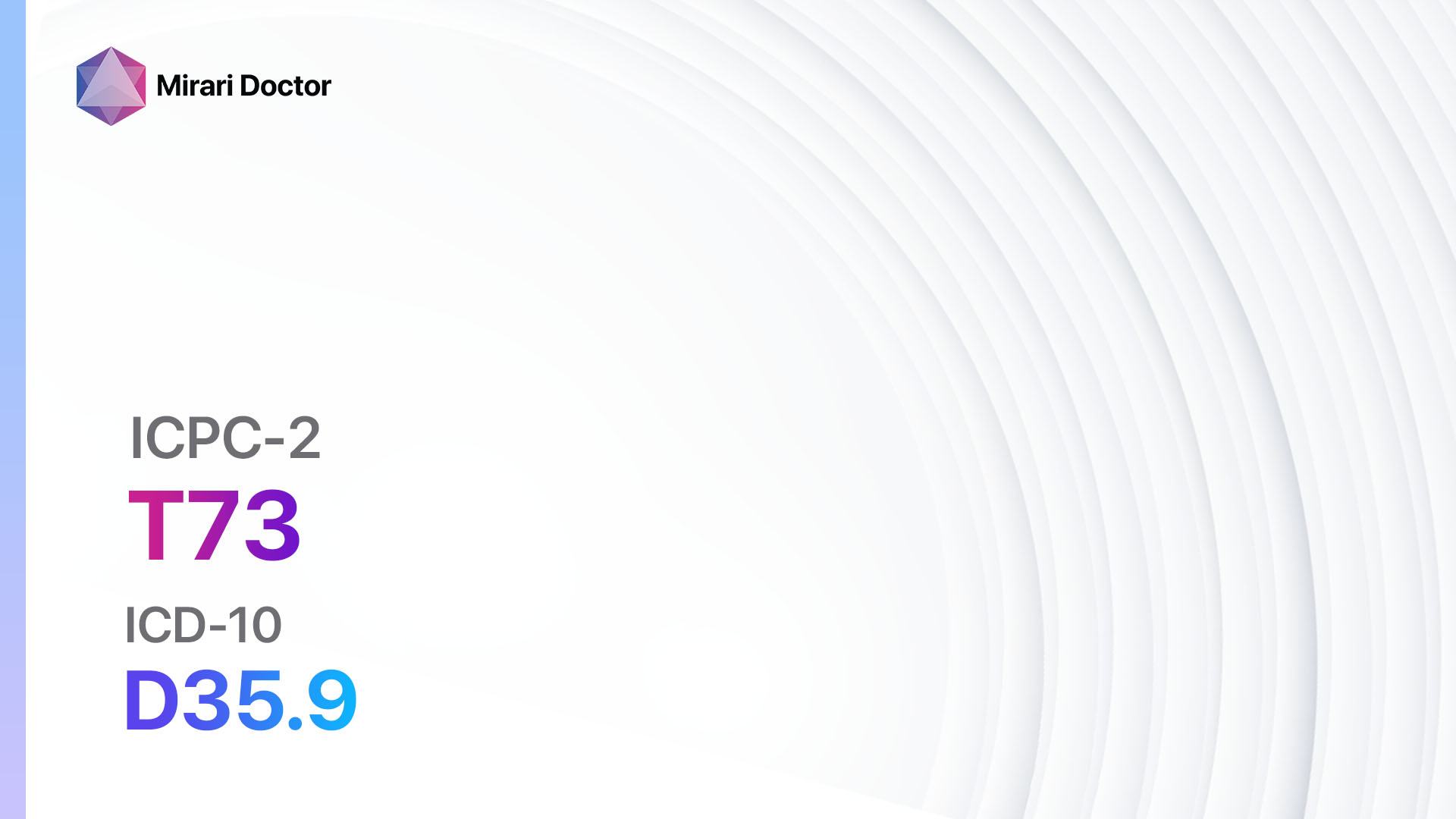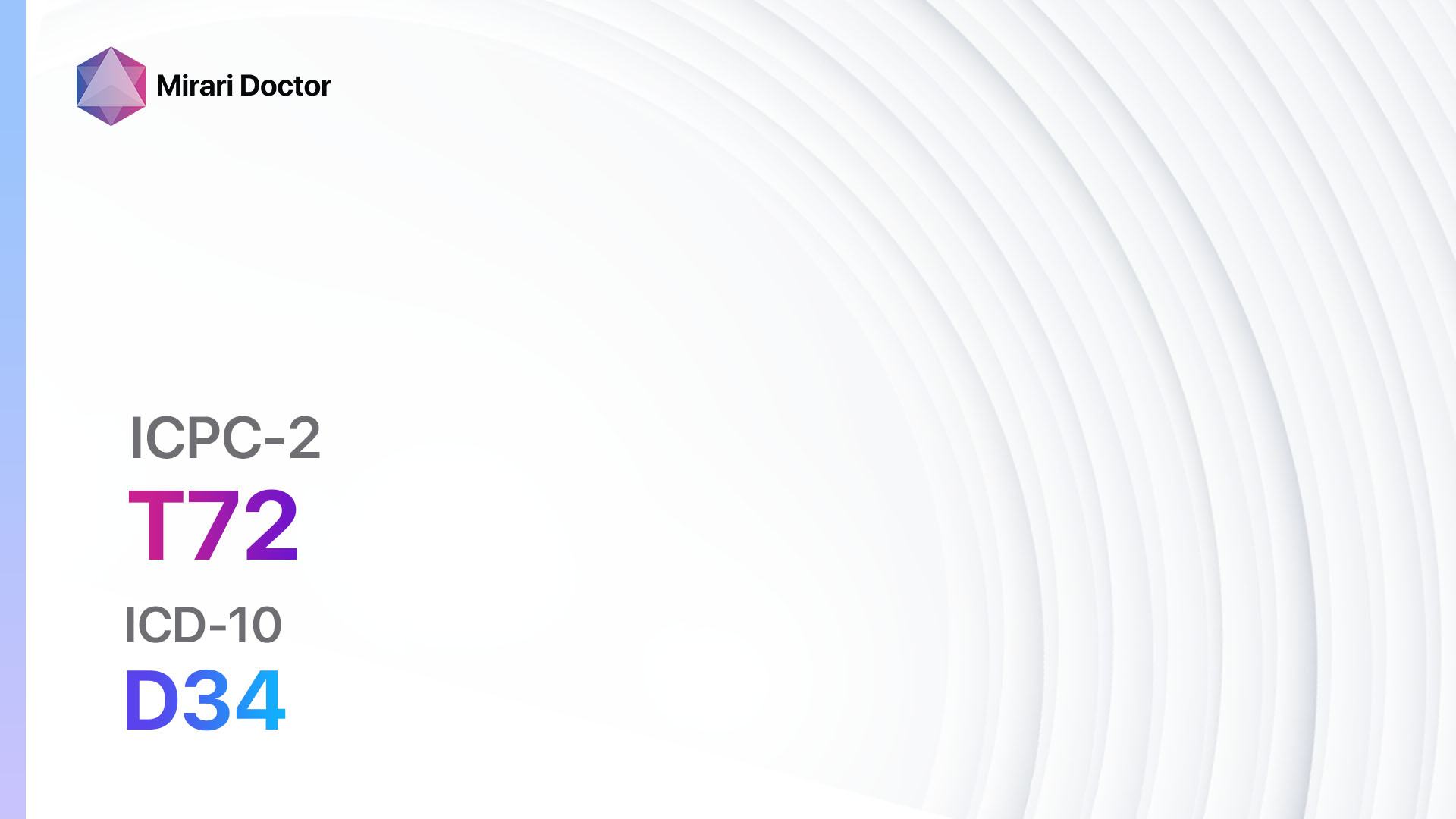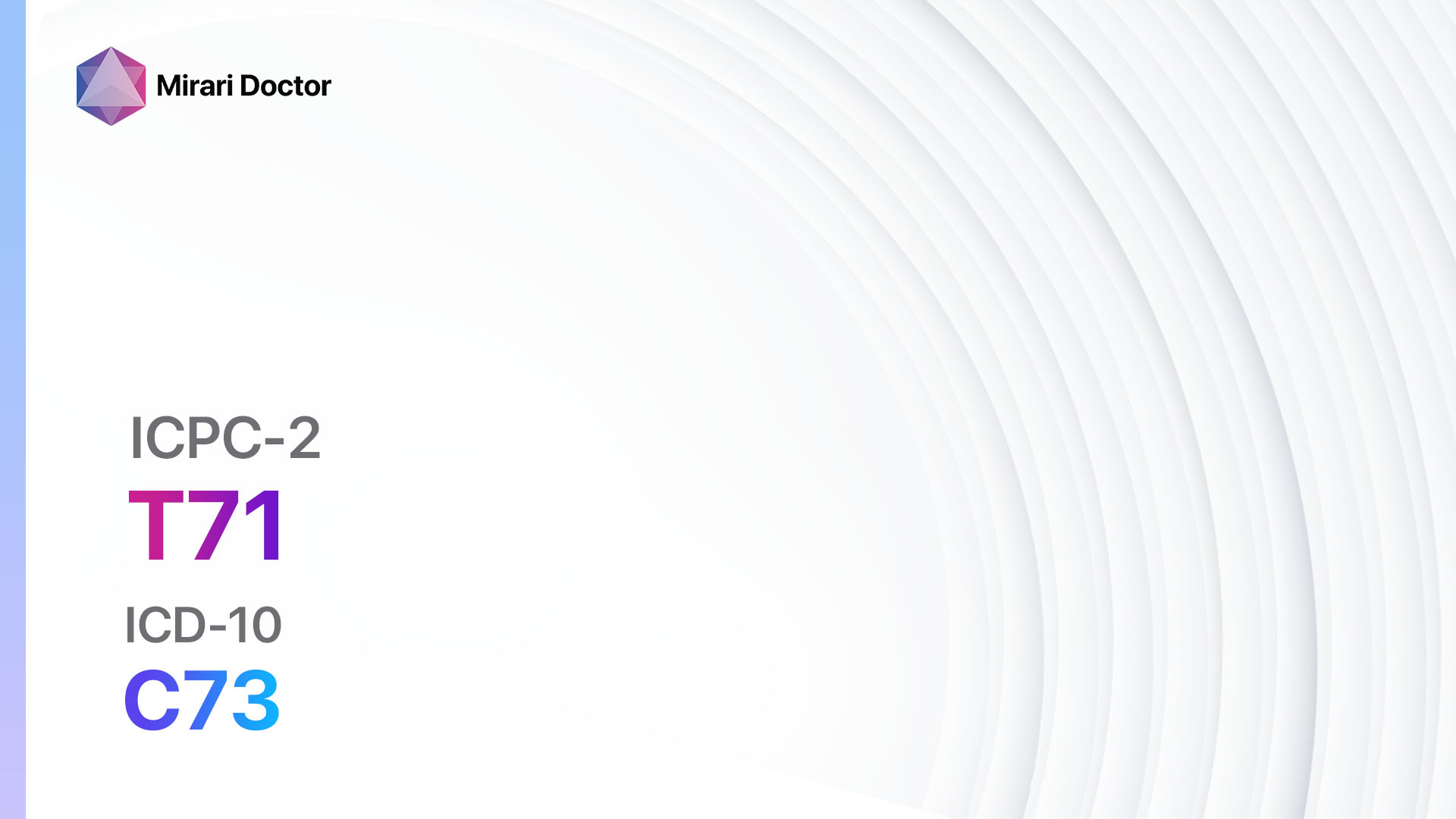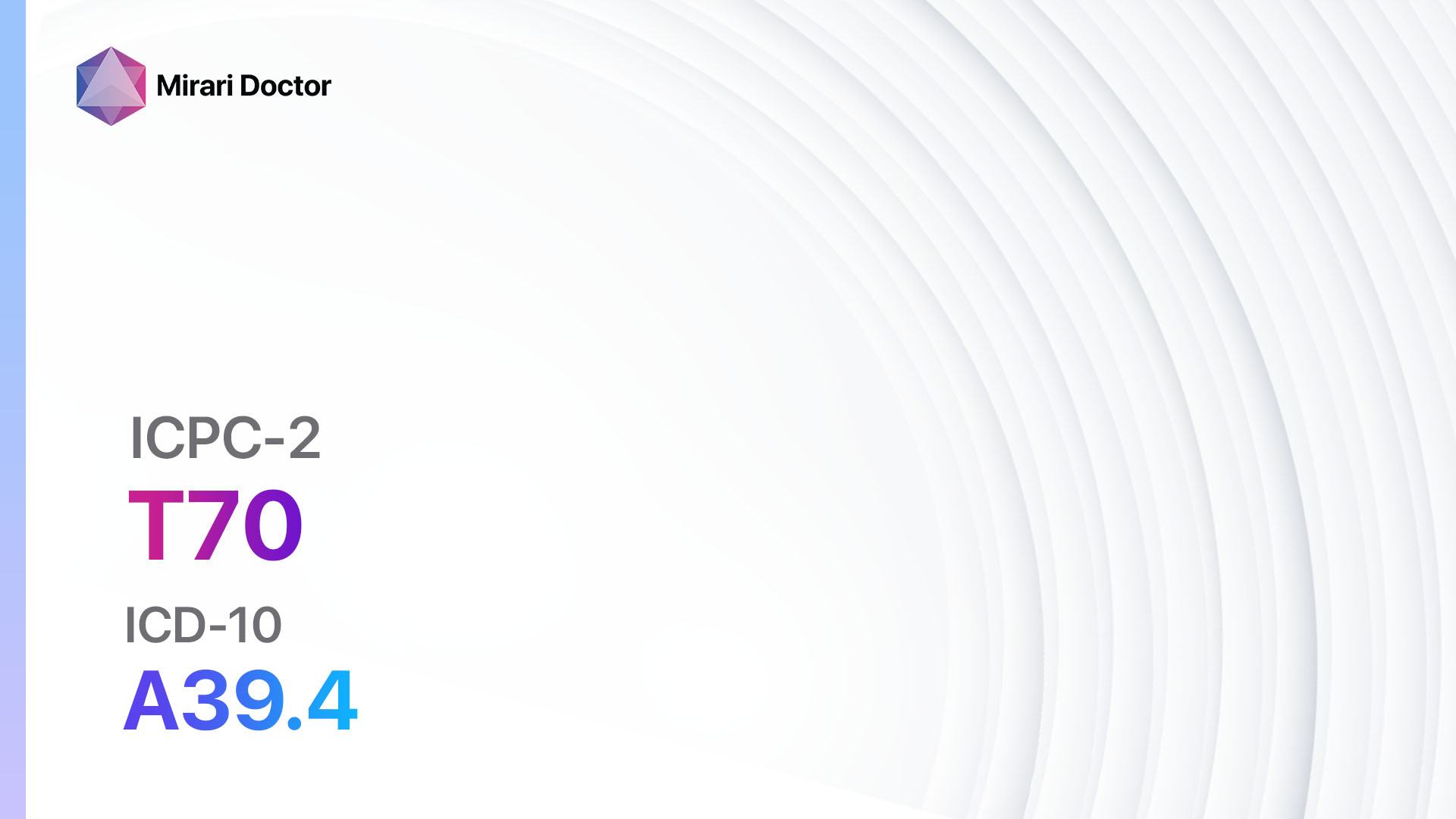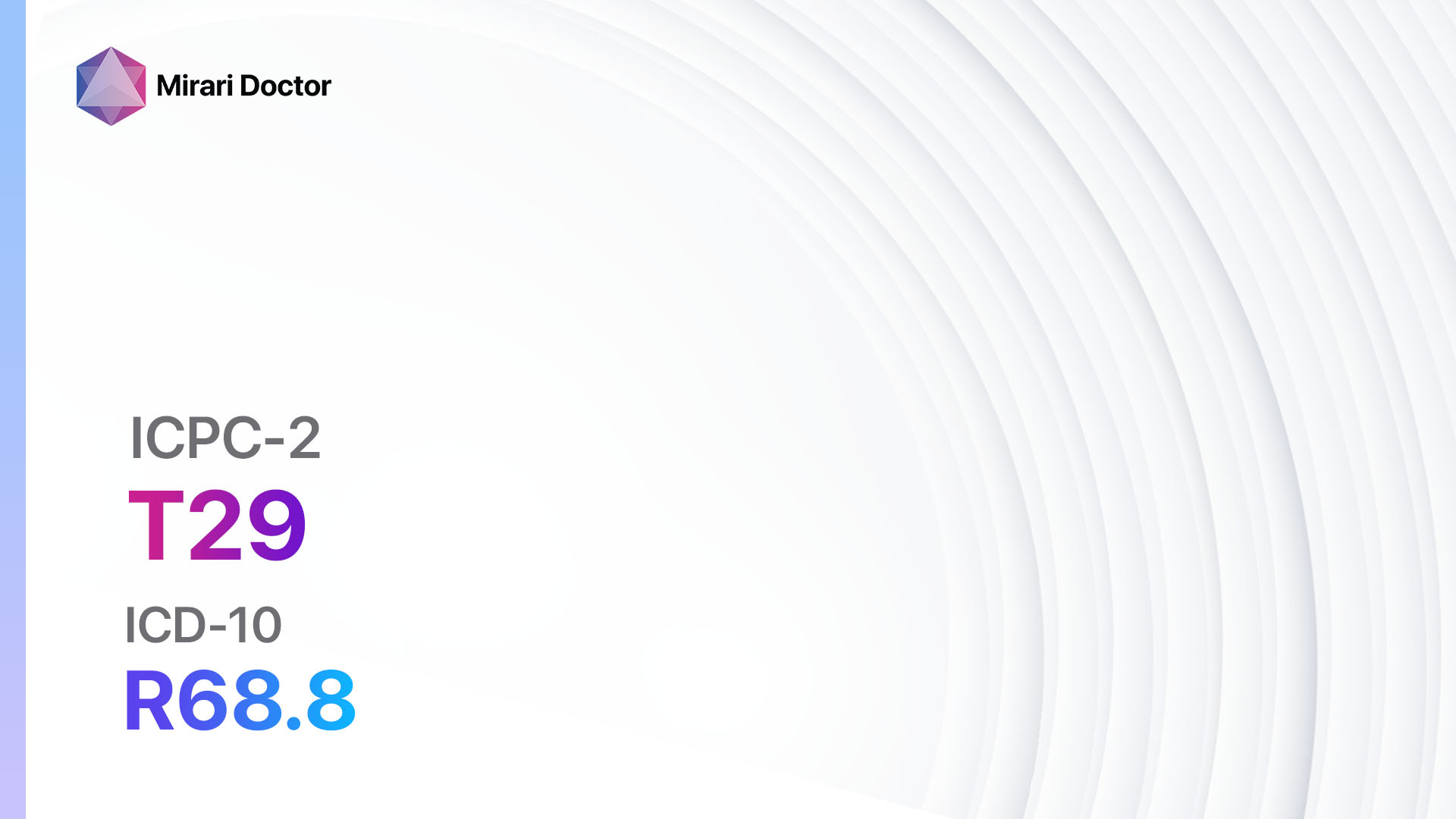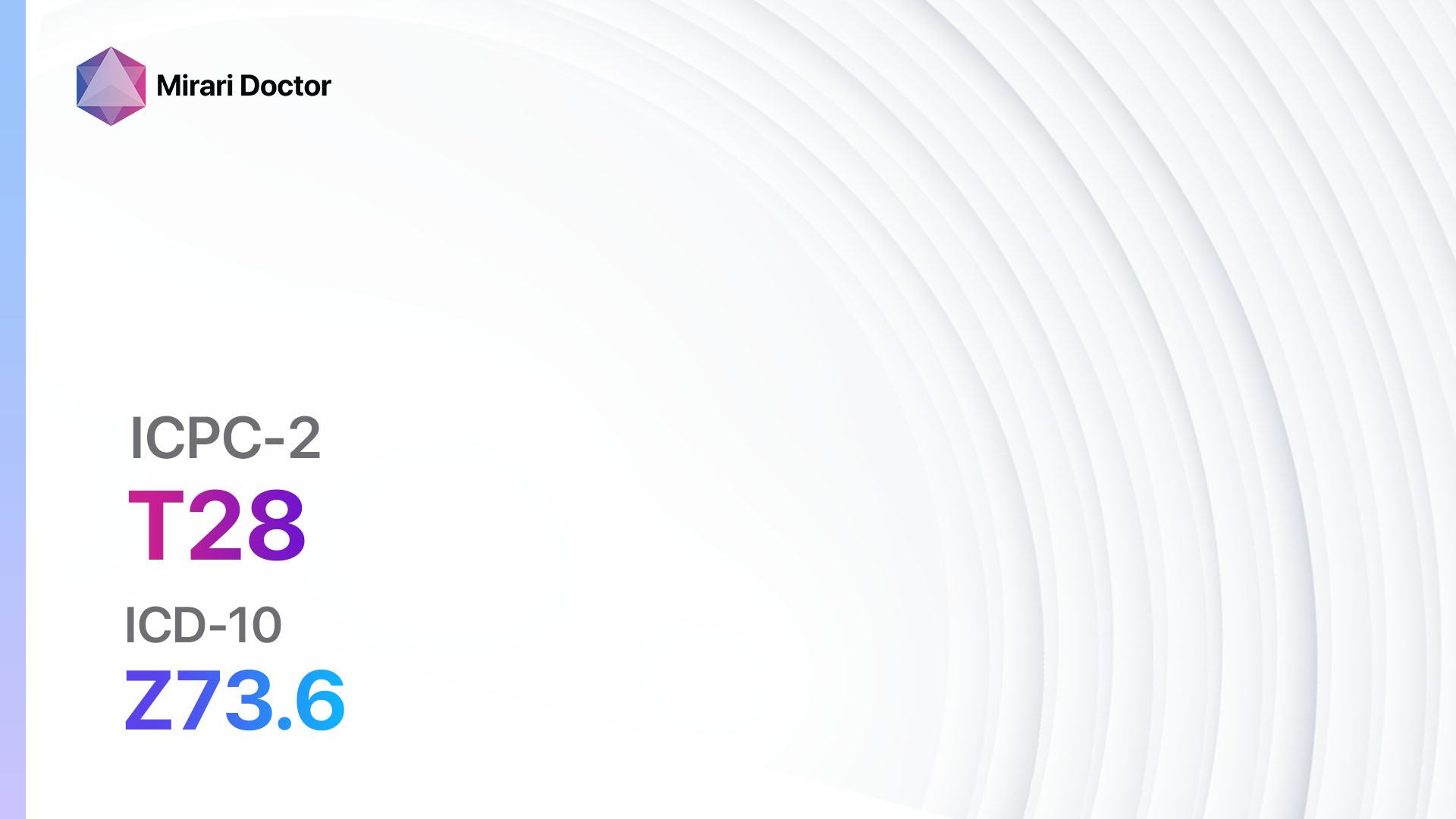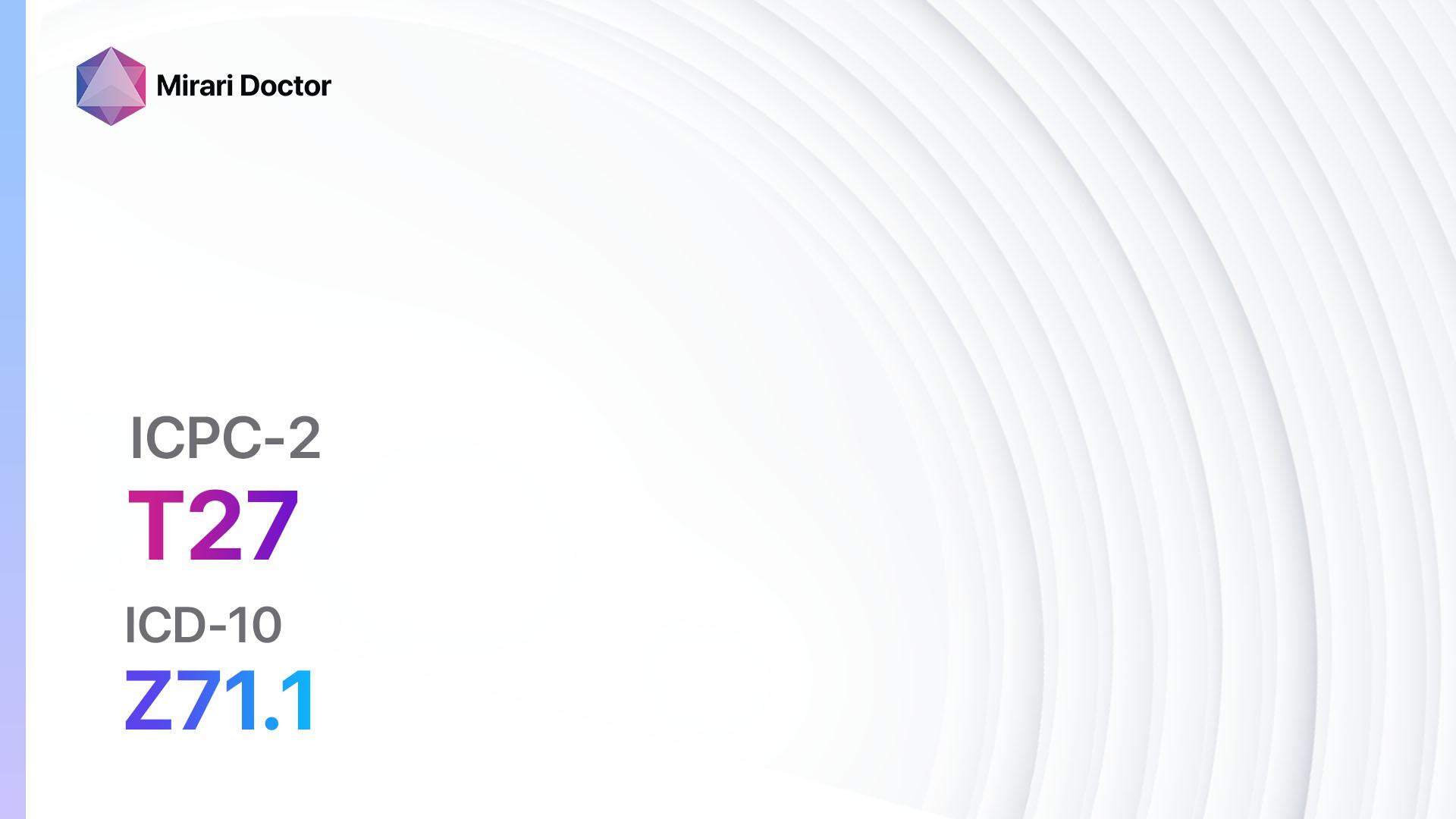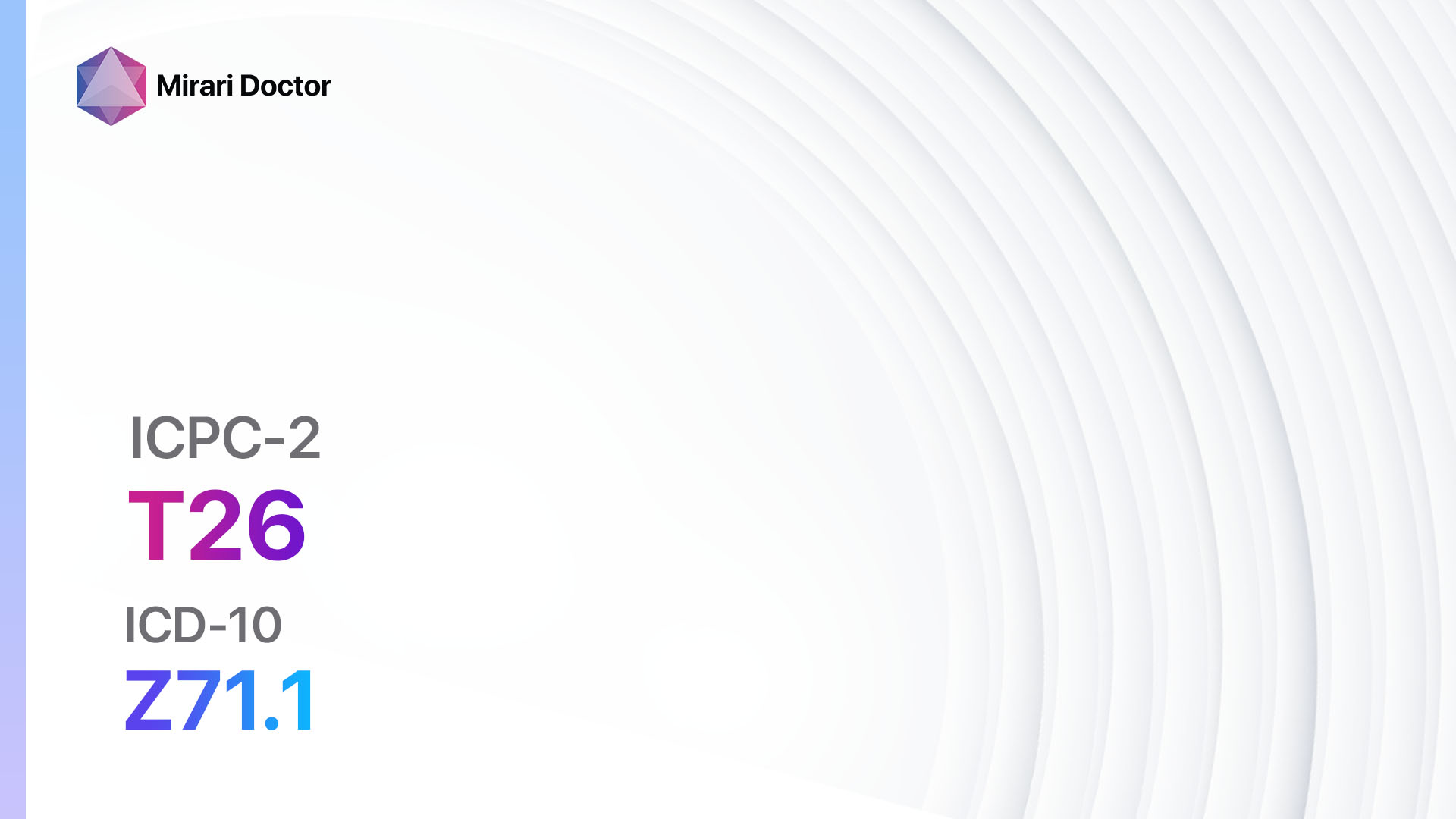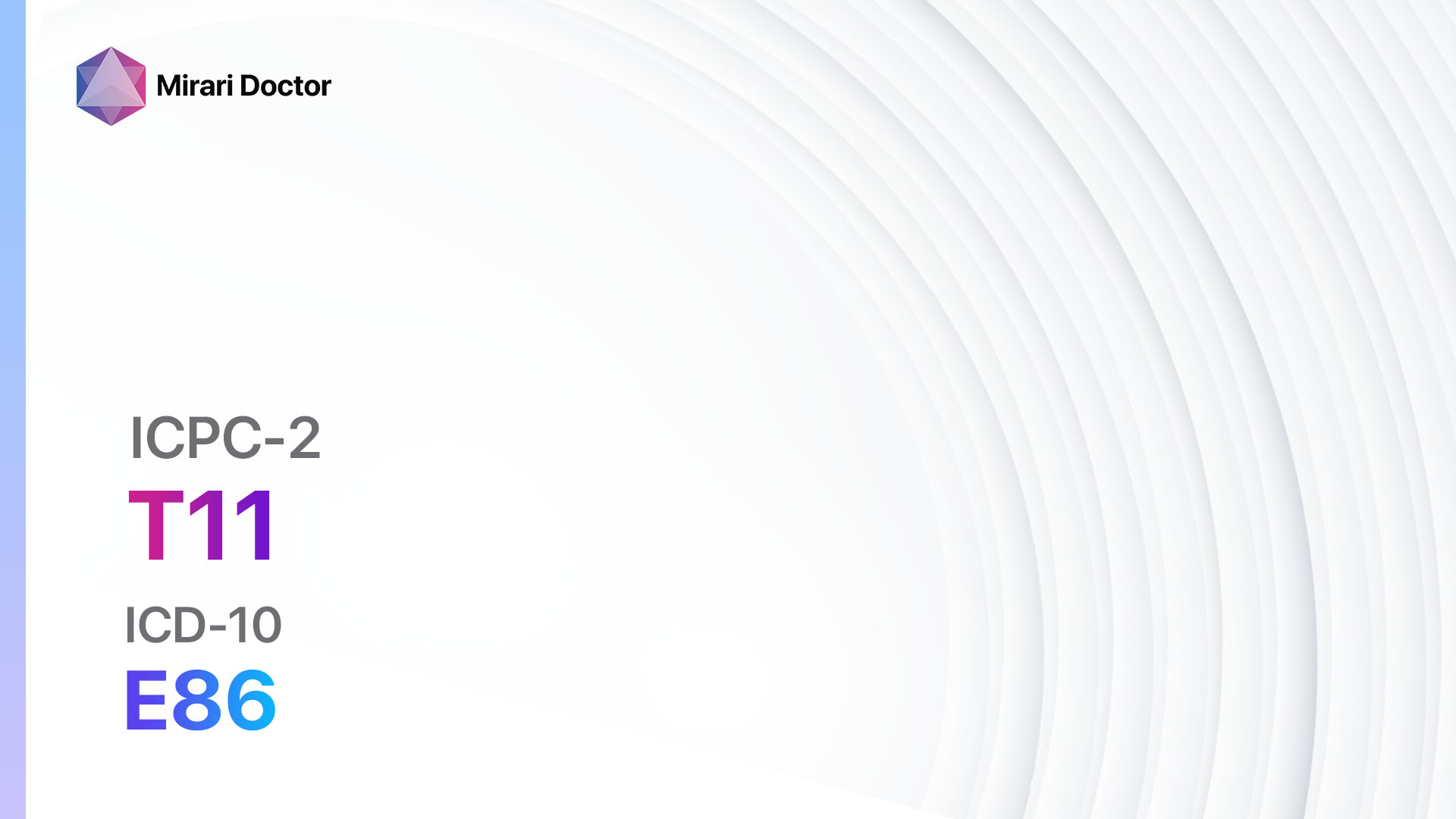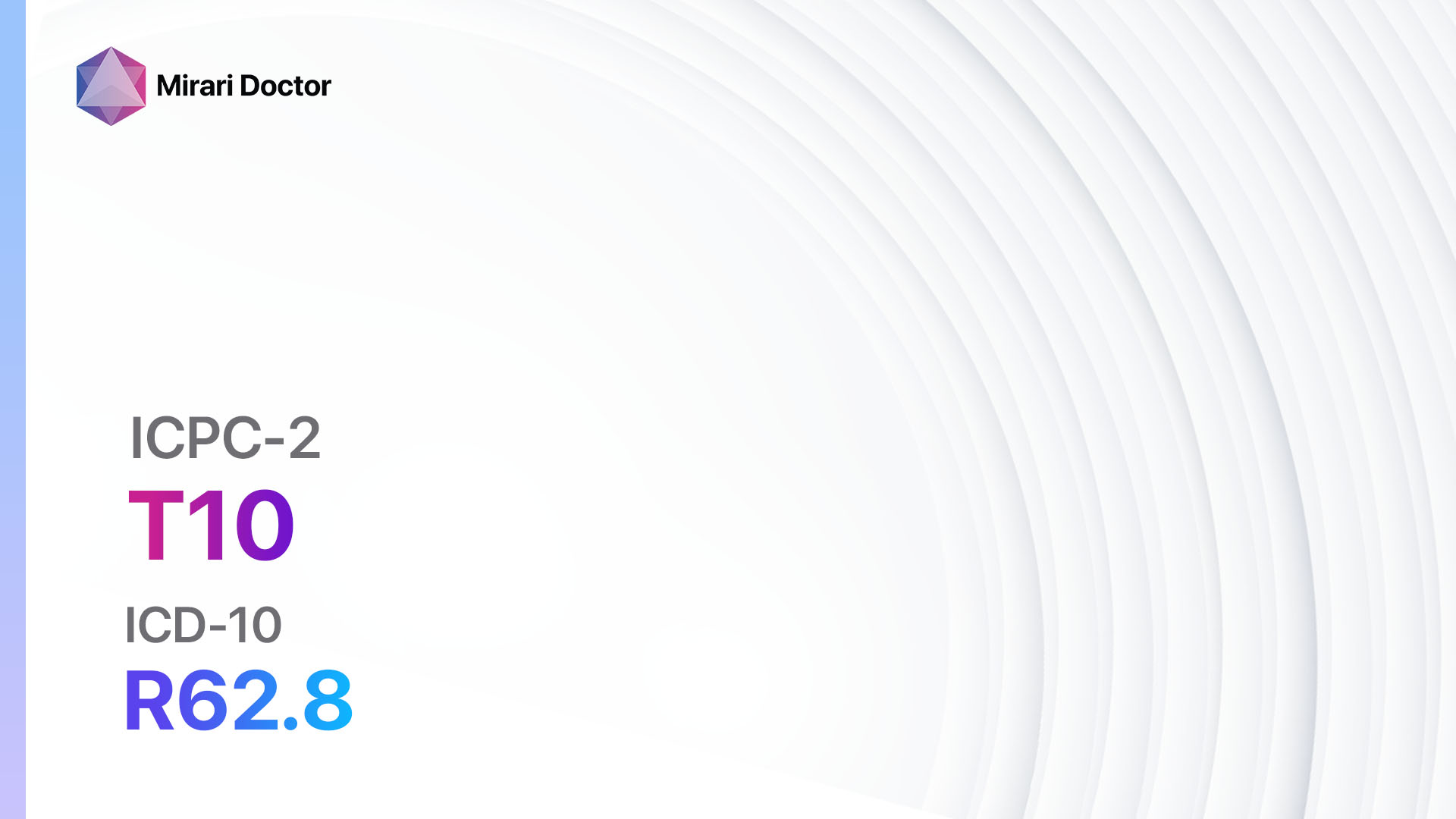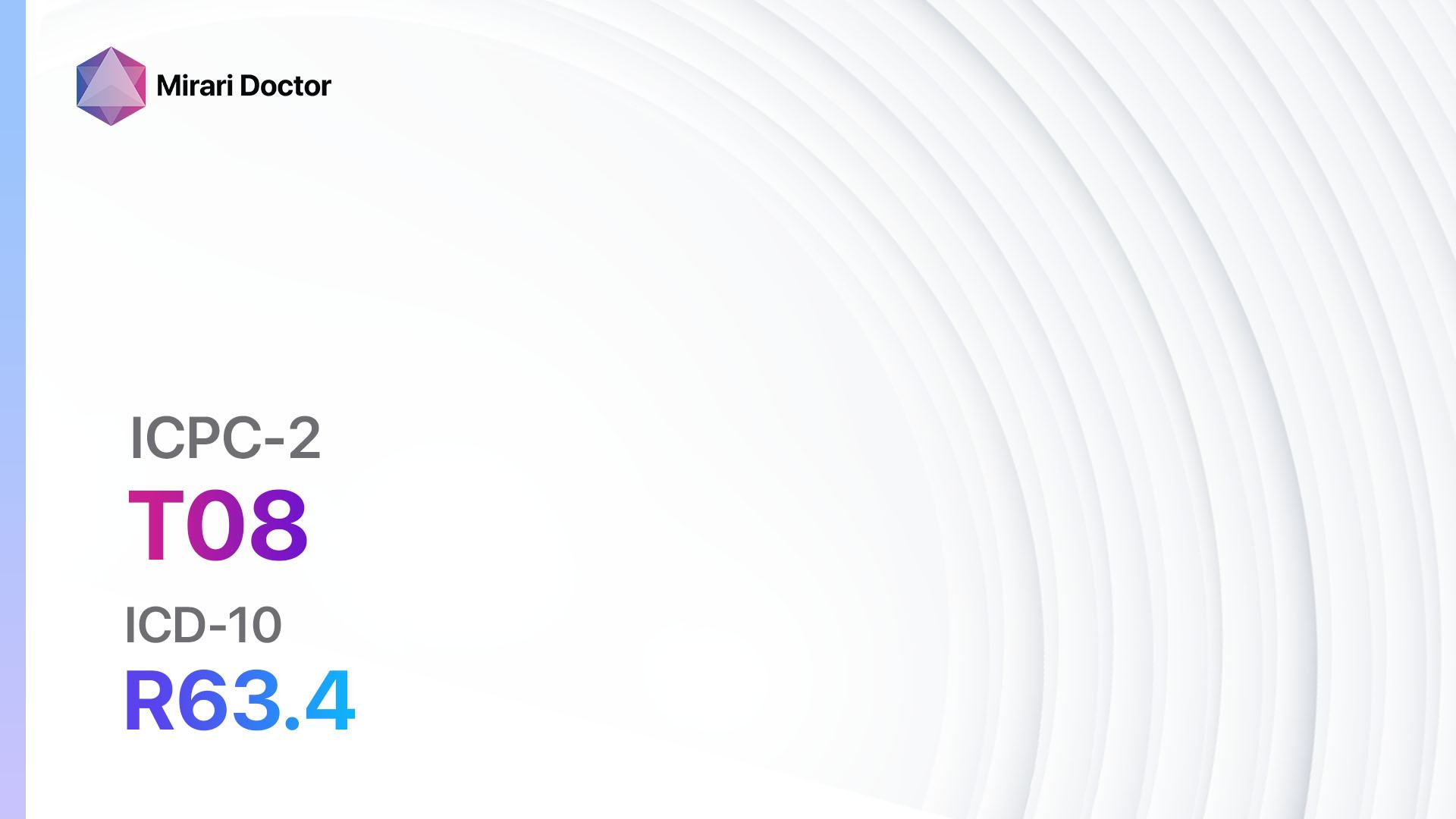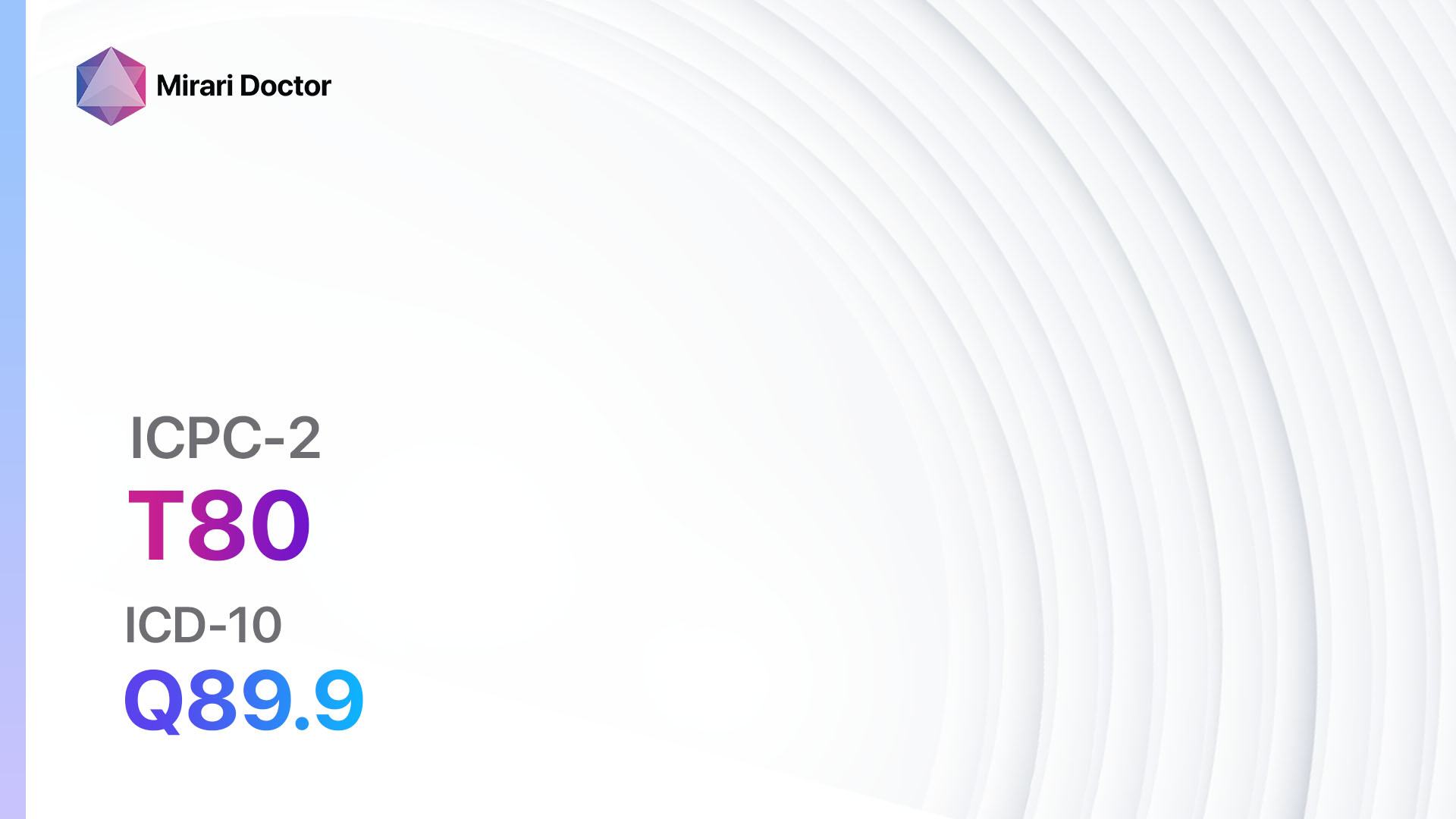
Introduction
Congenital anom endocrine/metab. refers to a group of disorders that affect the endocrine and metabolic systems and are present from birth. These disorders can have significant impacts on growth, development, and overall health[1]. The aim of this guide is to provide an overview of the symptoms, causes, diagnostic steps, possible interventions, and lifestyle interventions for Congenital anom endocrine/metab.
Codes
- ICPC-2 Code: T80 Congenital anomaly endocrine/metabolic
- ICD-10 Code: Q89.9 Congenital malformation, unspecified
Symptoms
- Growth abnormalities: such as short stature or excessive growth[2]
- Developmental delays: including delayed puberty or cognitive impairments[3]
- Hormonal imbalances: such as thyroid dysfunction or adrenal insufficiency[4]
- Metabolic disorders: including diabetes or lipid abnormalities[5]
- Physical abnormalities: such as abnormal facial features or genitalia[6]
Causes
- Genetic mutations: Congenital anom endocrine/metab. can be caused by mutations in specific genes that regulate hormone production or metabolism[7].
- Chromosomal abnormalities: Certain chromosomal abnormalities, such as Down syndrome or Turner syndrome, can lead to endocrine and metabolic disorders[8].
- Maternal factors: Exposure to certain medications, infections, or substances during pregnancy can increase the risk of Congenital anom endocrine/metab. in the offspring[9].
Diagnostic Steps
Medical History
- Gather information about the patient’s family history of endocrine or metabolic disorders.
- Ask about any symptoms or developmental delays the patient has experienced.
- Inquire about any medications or substances the patient may have been exposed to during pregnancy[10].
Physical Examination
- Measure the patient’s height, weight, and body proportions.
- Examine the patient’s facial features, including any abnormalities.
- Assess the patient’s genitalia for any signs of abnormal development.
- Check for any physical signs of hormonal imbalances, such as enlarged thyroid or adrenal glands.
Laboratory Tests
- Hormone levels: Measure the levels of various hormones in the blood, such as thyroid-stimulating hormone (TSH), cortisol, insulin, or growth hormone.
- Genetic testing: Perform genetic testing to identify any specific gene mutations associated with Congenital anom endocrine/metab.
- Metabolic panels: Evaluate the patient’s blood glucose, lipid levels, and other metabolic markers.
Diagnostic Imaging
- X-rays: Use X-rays to assess bone age and identify any skeletal abnormalities.
- Ultrasound: Perform ultrasound imaging to evaluate the structure and function of specific organs, such as the thyroid or adrenal glands.
- MRI or CT scans: Use advanced imaging techniques to visualize the brain or other internal organs for any abnormalities.
Other Tests
- Echocardiogram: Assess the structure and function of the heart, especially in cases of suspected congenital heart defects.
- Urine tests: Analyze urine samples for any abnormalities in hormone or metabolic markers.
- Biopsy: In certain cases, a biopsy of affected tissues may be necessary to confirm the diagnosis.
Follow-up and Patient Education
- Schedule regular follow-up appointments to monitor the patient’s growth, development, and response to treatment.
- Provide education to the patient and their family about the nature of Congenital anom endocrine/metab., the importance of adherence to treatment, and potential complications or long-term effects.
Possible Interventions
Traditional Interventions
Medications:
Top 5 drugs for Congenital anom endocrine/metab.:
- Levothyroxine (for congenital hypothyroidism):
- Cost: $10-$50/month.
- Contraindications: Hypersensitivity to levothyroxine.
- Side effects: Increased heart rate, tremors, weight loss.
- Severe side effects: Chest pain, irregular heartbeat.
- Drug interactions: Calcium supplements, iron supplements.
- Warning: Regular monitoring of thyroid hormone levels required.
- Insulin (for congenital diabetes):
- Cost: Varies depending on the type of insulin and insurance coverage.
- Contraindications: Hypersensitivity to insulin.
- Side effects: Hypoglycemia, weight gain.
- Severe side effects: Severe hypoglycemia, allergic reactions.
- Drug interactions: Beta-blockers, certain antibiotics.
- Warning: Regular monitoring of blood glucose levels required.
- Growth hormone (for growth hormone deficiency):
- Cost: $500-$3000/month.
- Contraindications: Active malignancy, closed epiphyses.
- Side effects: Headaches, joint pain.
- Severe side effects: Intracranial hypertension, pancreatitis.
- Drug interactions: Glucocorticoids, estrogen.
- Warning: Regular monitoring of growth hormone levels required.
- Corticosteroids (for congenital adrenal hyperplasia):
- Cost: Varies depending on the specific corticosteroid and insurance coverage.
- Contraindications: Active infections, hypersensitivity to corticosteroids.
- Side effects: Weight gain, increased appetite.
- Severe side effects: Adrenal suppression, osteoporosis.
- Drug interactions: Nonsteroidal anti-inflammatory drugs (NSAIDs), certain antifungal medications.
- Warning: Regular monitoring of adrenal function required.
- L-thyroxine (for congenital hypothyroidism):
- Cost: $10-$50/month.
- Contraindications: Hypersensitivity to L-thyroxine.
- Side effects: Increased heart rate, tremors, weight loss.
- Severe side effects: Chest pain, irregular heartbeat.
- Drug interactions: Calcium supplements, iron supplements.
- Warning: Regular monitoring of thyroid hormone levels required.
Alternative Drugs:
- Dexamethasone (for congenital adrenal hyperplasia)
- Somatropin (for growth hormone deficiency)
- Metformin (for congenital diabetes)
- Methylphenidate (for cognitive impairments)
- Testosterone (for hypogonadism)
Surgical Procedures:
- Thyroidectomy: Surgical removal of the thyroid gland in cases of severe congenital hypothyroidism. Cost: $10,000-$30,000.
- Adrenalectomy: Surgical removal of the adrenal glands in cases of congenital adrenal hyperplasia. Cost: $20,000-$50,000.
- Pancreatectomy: Surgical removal of the pancreas in cases of severe congenital diabetes. Cost: $50,000-$100,000.
Alternative Interventions
- Acupuncture: May help alleviate symptoms and improve overall well-being. Cost: $60-$120 per session.
- Herbal supplements: Some herbal supplements, such as ashwagandha or ginseng, may have potential benefits for hormonal balance. Cost: Varies depending on the specific supplement.
- Homeopathy: Some homeopathic remedies, such as Natrum muriaticum or Lycopodium, may be used to address specific symptoms. Cost: Varies depending on the specific remedy and consultation fees.
- Nutritional therapy: Working with a registered dietitian to develop a personalized nutrition plan may help optimize hormone and metabolic function. Cost: Varies depending on the duration and frequency of consultations.
- Mind-body techniques: Practices such as yoga, meditation, or biofeedback may help reduce stress and improve overall well-being. Cost: Varies depending on the specific practice and instructor fees.
Lifestyle Interventions
- Regular exercise: Engaging in physical activity can help regulate hormone levels and improve metabolic function. Cost: Varies depending on the chosen activity (e.g., gym membership, sports equipment).
- Balanced diet: Consuming a diet rich in fruits, vegetables, whole grains, and lean proteins can support overall health and hormone balance. Cost: Varies depending on individual food choices and dietary preferences.
- Stress management: Implementing stress-reduction techniques, such as mindfulness or relaxation exercises, can help regulate hormone levels. Cost: Varies depending on the chosen technique (e.g., mindfulness app subscription, yoga classes).
- Adequate sleep: Prioritizing sufficient sleep can support hormone regulation and overall well-being. Cost: Varies depending on individual sleep needs and sleep environment.
- Avoidance of environmental toxins: Minimizing exposure to chemicals, pollutants, and endocrine-disrupting substances can help maintain hormone balance. Cost: Varies depending on individual lifestyle choices and access to toxin-free products.
It is important to note that the cost ranges provided are approximate and may vary depending on the location and availability of the interventions. It is recommended to consult with healthcare professionals for personalized treatment options and cost estimates.
Mirari Cold Plasma Alternative Intervention
Understanding Mirari Cold Plasma
- Safe and Non-Invasive Treatment: Mirari Cold Plasma is a safe and non-invasive treatment option for various skin conditions. It does not require incisions, minimizing the risk of scarring, bleeding, or tissue damage.
- Efficient Extraction of Foreign Bodies: Mirari Cold Plasma facilitates the removal of foreign bodies from the skin by degrading and dissociating organic matter, allowing easier access and extraction.
- Pain Reduction and Comfort: Mirari Cold Plasma has a local analgesic effect, providing pain relief during the treatment, making it more comfortable for the patient.
- Reduced Risk of Infection: Mirari Cold Plasma has antimicrobial properties, effectively killing bacteria and reducing the risk of infection.
- Accelerated Healing and Minimal Scarring: Mirari Cold Plasma stimulates wound healing and tissue regeneration, reducing healing time and minimizing the formation of scars.
Mirari Cold Plasma Prescription
Video instructions for using Mirari Cold Plasma Device – T80 Congenital anomaly endocrine/metabolic (ICD-10:Q89.9)
| Mild | Moderate | Severe |
| Mode setting: 7 (Immunotherapy) Location: 1 (Sacrum) Morning: 15 minutes, Evening: 15 minutes |
Mode setting: 7 (Immunotherapy) Location: 1 (Sacrum) Morning: 30 minutes, Lunch: 30 minutes, Evening: 30 minutes |
Mode setting: 7 (Immunotherapy) Location: 1 (Sacrum) Morning: 30 minutes, Lunch: 30 minutes, Evening: 30 minutes |
| Mode setting: 7 (Immunotherapy) Location: 4 (Heart, Bile & Pancreas) Morning: 15 minutes, Evening: 15 minutes |
Mode setting: 7 (Immunotherapy) Location: 4 (Heart, Bile & Pancreas) Morning: 30 minutes, Lunch: 30 minutes, Evening: 30 minutes |
Mode setting: 7 (Immunotherapy) Location: 4 (Heart, Bile & Pancreas) Morning: 30 minutes, Lunch: 30 minutes, Evening: 30 minutes |
| Mode setting: 3 (Antiviral Therapy) Location: 6 (Throat, Lymphatic & Thyroid) Morning: 15 minutes, Evening: 15 minutes |
Mode setting: 3 (Antiviral Therapy) Location: 6 (Throat, Lymphatic & Thyroid) Morning: 30 minutes, Lunch: 30 minutes, Evening: 30 minutes |
Mode setting: 3 (Antiviral Therapy) Location: 6 (Throat, Lymphatic & Thyroid) Morning: 30 minutes, Lunch: 30 minutes, Evening: 30 minutes |
| Mode setting: 7 (Immunotherapy) Location: 7 (Neuro system & ENT) Morning: 15 minutes, Evening: 15 minutes |
Mode setting: 7 (Immunotherapy) Location: 7 (Neuro system & ENT) Morning: 30 minutes, Lunch: 30 minutes, Evening: 30 minutes |
Mode setting: 7 (Immunotherapy) Location: 7 (Neuro system & ENT) Morning: 30 minutes, Lunch: 30 minutes, Evening: 30 minutes |
| Total Morning: 60 minutes approx. $10 USD, Evening: 60 minutes approx. $10 USD |
Total Morning: 120 minutes approx. $20 USD, Lunch: 120 minutes approx. $20 USD, Evening: 120 minutes approx. $20 USD, |
Total Morning: 120 minutes approx. $20 USD, Lunch: 120 minutes approx. $20 USD, Evening: 120 minutes approx. $20 USD, |
| Usual treatment for 7-60 days approx. $140 USD – $1200 USD | Usual treatment for 6-8 weeks approx. $2,520 USD – $3,360 USD |
Usual treatment for 3-6 months approx. $5,400 USD – $10,800 USD
|
 |
|
Use the Mirari Cold Plasma device to treat Congenital anom endocrine/metab. effectively.
WARNING: MIRARI COLD PLASMA IS DESIGNED FOR THE HUMAN BODY WITHOUT ANY ARTIFICIAL OR THIRD PARTY PRODUCTS. USE OF OTHER PRODUCTS IN COMBINATION WITH MIRARI COLD PLASMA MAY CAUSE UNPREDICTABLE EFFECTS, HARM OR INJURY. PLEASE CONSULT A MEDICAL PROFESSIONAL BEFORE COMBINING ANY OTHER PRODUCTS WITH USE OF MIRARI.
Step 1: Cleanse the Skin
- Start by cleaning the affected area of the skin with a gentle cleanser or mild soap and water. Gently pat the area dry with a clean towel.
Step 2: Prepare the Mirari Cold Plasma device
- Ensure that the Mirari Cold Plasma device is fully charged or has fresh batteries as per the manufacturer’s instructions. Make sure the device is clean and in good working condition.
- Switch on the Mirari device using the power button or by following the specific instructions provided with the device.
- Some Mirari devices may have adjustable settings for intensity or treatment duration. Follow the manufacturer’s instructions to select the appropriate settings based on your needs and the recommended guidelines.
Step 3: Apply the Device
- Place the Mirari device in direct contact with the affected area of the skin. Gently glide or hold the device over the skin surface, ensuring even coverage of the area experiencing.
- Slowly move the Mirari device in a circular motion or follow a specific pattern as indicated in the user manual. This helps ensure thorough treatment coverage.
Step 4: Monitor and Assess:
- Keep track of your progress and evaluate the effectiveness of the Mirari device in managing your Congenital anom endocrine/metab.. If you have any concerns or notice any adverse reactions, consult with your health care professional.
Note
This guide is for informational purposes only and should not replace the advice of a medical professional. Always consult with your healthcare provider or a qualified medical professional for personal advice, diagnosis, or treatment. Do not solely rely on the information presented here for decisions about your health. Use of this information is at your own risk. The authors of this guide, nor any associated entities or platforms, are not responsible for any potential adverse effects or outcomes based on the content.
Mirari Cold Plasma System Disclaimer
- Purpose: The Mirari Cold Plasma System is a Class 2 medical device designed for use by trained healthcare professionals. It is registered for use in Thailand and Vietnam. It is not intended for use outside of these locations.
- Informational Use: The content and information provided with the device are for educational and informational purposes only. They are not a substitute for professional medical advice or care.
- Variable Outcomes: While the device is approved for specific uses, individual outcomes can differ. We do not assert or guarantee specific medical outcomes.
- Consultation: Prior to utilizing the device or making decisions based on its content, it is essential to consult with a Certified Mirari Tele-Therapist and your medical healthcare provider regarding specific protocols.
- Liability: By using this device, users are acknowledging and accepting all potential risks. Neither the manufacturer nor the distributor will be held accountable for any adverse reactions, injuries, or damages stemming from its use.
- Geographical Availability: This device has received approval for designated purposes by the Thai and Vietnam FDA. As of now, outside of Thailand and Vietnam, the Mirari Cold Plasma System is not available for purchase or use.
References
- Jameson JL, De Groot LJ. Endocrinology: Adult and Pediatric. 7th ed. Philadelphia, PA: Elsevier Saunders; 2016.
- Rogol AD, Hayden GF. Etiologies and early diagnosis of short stature and growth failure in children and adolescents. J Pediatr. 2014;164(5 Suppl):S1-S14.e6.
- Boehm U, Bouloux PM, Dattani MT, et al. Expert consensus document: European Consensus Statement on congenital hypogonadotropic hypogonadism–pathogenesis, diagnosis and treatment. Nat Rev Endocrinol. 2015;11(9):547-564.
- Charmandari E, Nicolaides NC, Chrousos GP. Adrenal insufficiency. Lancet. 2014;383(9935):2152-2167.
- Hattersley AT, Patel KA. Precision diabetes: learning from monogenic diabetes. Diabetologia. 2017;60(5):769-777.
- Jones KL, Jones MC, Del Campo M. Smith’s Recognizable Patterns of Human Malformation. 7th ed. Philadelphia, PA: Elsevier Saunders; 2013.
- Sperling MA. Pediatric Endocrinology. 4th ed. Philadelphia, PA: Elsevier Saunders; 2014.
- Gravholt CH, Andersen NH, Conway GS, et al. Clinical practice guidelines for the care of girls and women with Turner syndrome: proceedings from the 2016 Cincinnati International Turner Syndrome Meeting. Eur J Endocrinol. 2017;177(3):G1-G70.
- Brent RL. Environmental causes of human congenital malformations: the pediatrician’s role in dealing with these complex clinical problems caused by a multiplicity of environmental and genetic factors. Pediatrics. 2004;113(4 Suppl):957-968.
- Melmed S, Polonsky KS, Larsen PR, Kronenberg HM. Williams Textbook of Endocrinology. 13th ed. Philadelphia, PA: Elsevier; 2016.
Related articles
Made in USA


